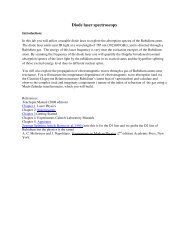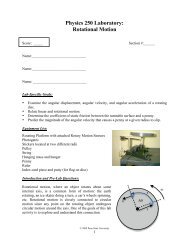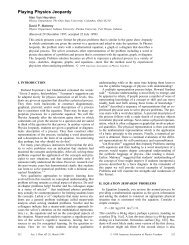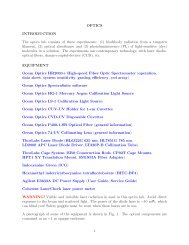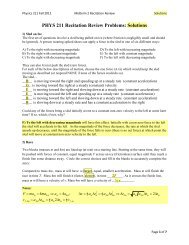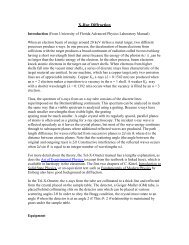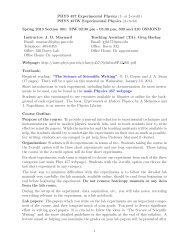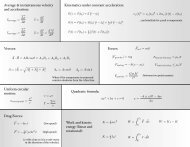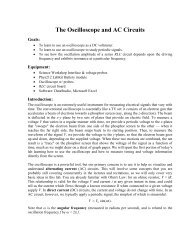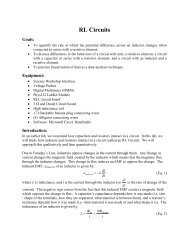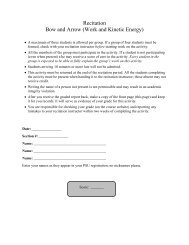Nanosurf easyScan 2 AFM Operating Instructions
Nanosurf easyScan 2 AFM Operating Instructions
Nanosurf easyScan 2 AFM Operating Instructions
You also want an ePaper? Increase the reach of your titles
YUMPU automatically turns print PDFs into web optimized ePapers that Google loves.
CHAPTER 3: PREPARING FOR MEASUREMENT<br />
3.4: Installing the sample<br />
3.4.1: Preparing the sample<br />
The <strong>easyScan</strong> 2 <strong>AFM</strong> can be used to examine any material with a surface roughness that<br />
does not exceed the height range of the scanning tip. Nevertheless the choice and<br />
preparation of the surface can influence the surface–tip interaction. Examples of<br />
influencing factors are excess moisture, dust, grease or other contaminations of the sample<br />
surface. Because of this, some samples need special preparation to clean their surface.<br />
Generally, however, only clean your samples if this is absolutely required, and be sure to<br />
clean very carefully in order not to harm the sample surface.<br />
If the surface is dusty, try to measure on a clean area between the dust. Although it is<br />
possible to blow away coarse particles with dry, oil-free air, small particles generally stick<br />
quite strongly to the surface and cannot be easily removed this way. Also note that bottled,<br />
pressurized air is generally dry, but pressurized air from an in-house supply is generally not.<br />
In this case an oil filter should be installed. Blowing away dust by breath is not advisable,<br />
because it too is not dry, and the risk of contaminating the sample even further is very high.<br />
When the sample surface is contaminated with solid matter or substances that can be<br />
dissolved, the surface should be cleaned with a solvent. Suitable solvents are distilled or<br />
demineralized water, alcohol or acetone, depending on the nature of the contaminant. The<br />
solvent should always be highly pure in order to prevent accumulation of impurities<br />
contained within the solvent on the sample surface. When the sample is very dirty, it should<br />
be cleaned several times to completely remove partially dissolved and redeposited<br />
contaminants. Delicate samples, which would suffer from such a treatment, can<br />
alternatively be cleaned in an ultrasonic bath.<br />
3.4.2: <strong>Nanosurf</strong> samples<br />
<strong>Nanosurf</strong> delivers various optional samples, which are usually packed in the <strong>AFM</strong> Tool Set.<br />
These samples are briefly described here. Further samples are available in the <strong>AFM</strong><br />
Extended Sample Kit, which contains its own sample description.<br />
All samples should be stored in their respective box. This way, it should not be necessary to<br />
clean them. Cleaning of the samples is generally not advisable (unless indicated below),<br />
because their surfaces are often rather delicate.<br />
Grid: 10 μm / 100 nm<br />
The Grid: 10 μm / 100 nm can be used for testing the XY-calibration of the 70 μm and<br />
100 μm scanners, and for testing the Z-calibration. It is manufactured using standard silicon<br />
34



